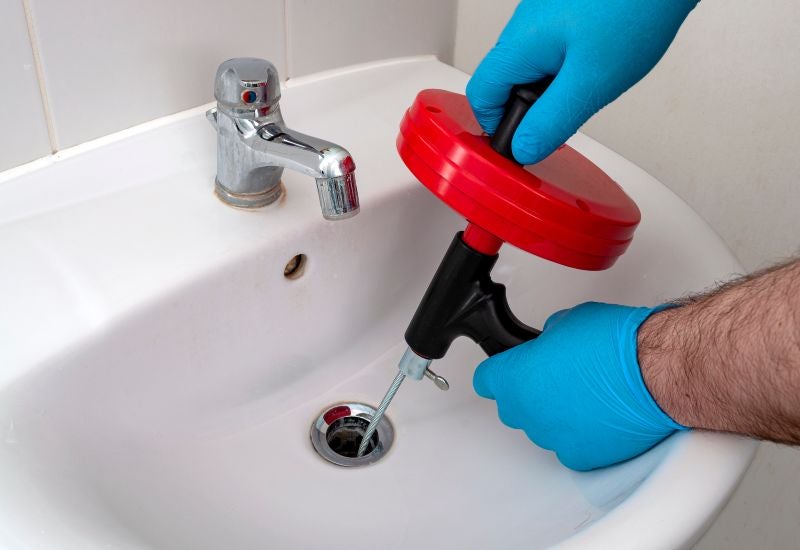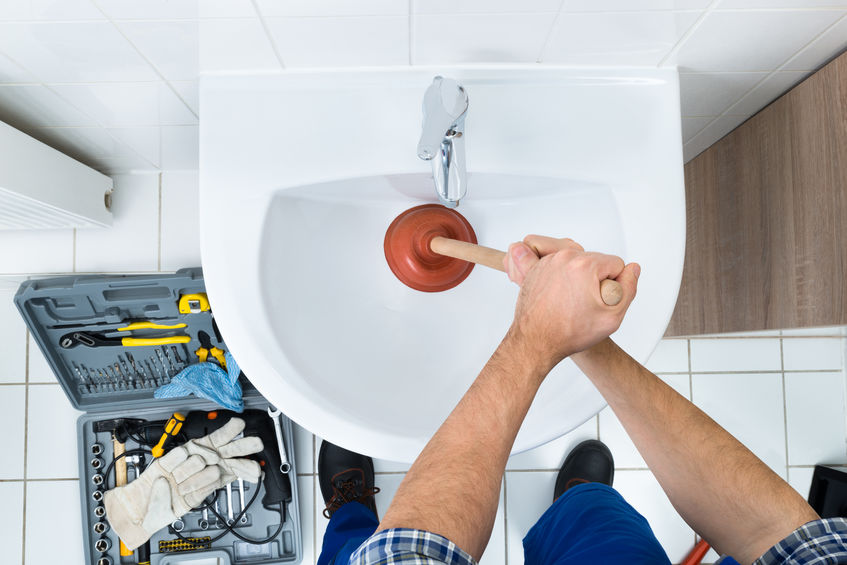What are your opinions regarding How to Use a Plunger to Unclog a Toilet or Drain?

Introduction
Proper maintenance of household drains is essential for preventing obstructions and making certain smooth water circulation. One of the key tools in every home owner's toolkit is the bettor, together with various drainpipe cleansers developed to tackle persistent blockages effectively. This write-up checks out how to make use of plungers and drainpipe cleansers properly to keep your drains pipes moving freely.
Area 1: Comprehending Plungers
Types of Plungers
There are several types of plungers offered, each designed for various types of drains pipes and obstructs. The most typical kinds include cup plungers, flange bettors, and accordion bettors.
How Plungers Work
Plungers work with the concept of creating pressure and suction to remove blockages. When effectively applied over a drain, they create a vacuum that can pull out debris or break up blockages.
Choosing the Right Plunger
Selecting the right plunger depends on the type of drainpipe and the nature of the obstruction. Mug bettors are ideal for sinks and bathtubs, while flange bettors are much better fit for bathrooms because of their design.
Common Blunders with Bettors
Preventing these errors ensures effective plunging: inappropriate seal around the drain, insufficient pressure, and unclear surrounding particles.
Section 2: Using Plungers Properly
Preparation
Before diving, guarantee the bettor covers the drainpipe totally and creates a tight seal. Clear any visible debris around the drainpipe opening.
Technique
Beginning with mild plunging activities to build suction. Increase pressure slowly, making use of a steady rhythm. Repeat as necessary until the drain clears.
Troubleshooting Tips
If plunging doesn't function, attempt readjusting the seal, using oil jelly for a much better seal, or utilizing a different type of bettor.
Area 3: Comprehending Drain Cleaning Company
Sorts Of Drain Cleaners
Drain pipes cleansers can be chemical or enzymatic. Chemical cleaners utilize strong chemicals to dissolve blockages, while enzymatic cleaners use natural enzymes to break down organic matter.
How Drainpipe Cleansers Work
Chemical cleaners respond with obstructions to liquify them, while enzymatic cleaners break down natural products like hair and oil without damaging pipelines.
Security Considerations
Constantly put on gloves and eye protection when making use of chemical drainpipe cleaners. Make certain appropriate ventilation and adhere to maker instructions carefully.
Eco-Friendly Alternatives
Take into consideration using vinegar and baking soft drink or enzyme-based cleansers for environmentally friendly options that are safer for pipelines and the setting.
Area 4: Utilizing Drain Cleansers Effectively
Application Strategies
Put chemical cleaners directly right into the drainpipe opening. Allow them to help the advised time prior to flushing with hot water. Chemical cleansers need to sit overnight.
Safety measures
Stay clear of blending various types of cleaners, as this can produce harmful fumes. Never ever utilize chemical cleansers combined with a bettor, as spilling can take place.
Taking Care Of Persistent Obstructions
For relentless obstructions, take into consideration making use of a pipes snake or calling a professional plumbing to prevent damages to pipelines.
Final thought
To conclude, understanding just how to make use of plungers and drain cleansers efficiently is vital for maintaining healthy and balanced plumbing systems. By choosing the right devices and techniques, home owners can deal with minor blockages and avoid significant plumbing concerns down the line.
How to Use a Plunger to Unclog a Drain
The humble plunger is a simple yet effective tool for breaking clogs in sinks, tubs and toilets. This handy tool is easy to use. You can make the most of its power if you understand how it works. Ready to dive in? Here’s what you need to know.
Safety First!
Never use a plunger with drain chemicals. Water will splash as you work, and the chemicals can spatter, burning skin and eyes. It’s a good idea to use rubber gloves and wear safety goggles when you work on a clog.
Choose the Right Tool for the Job
Plungers come in two different styles. Sinks, bathtubs and showers require a cup plunger. Like its name suggests, the rubber end is shaped like a cup. Use a flange plunger on toilets. These plungers have a rubber funnel extending from the cup. A plunger needs to be big enough to cover the drain.
Ready, Set, Plunge!
Coat the rim: Coat the plunger rim with petroleum jelly. This helps make a better seal.
Block outlets: Hold a wet rag over nearby outlets such as the overflow vent or the drain in a second sink.
Release air: Insert the plunger at an angle into the water. Water will displace air in the cup. A water-filled cup is more forceful than one filled with air.
Keep the plunger upright: Hold the plunger perpendicular to the drain. Use fast, forceful strokes, but make the first stroke gentle. The first stroke can create a splash if the cup still contains air. Thrust the plunger 15 to 20 times.
Snap off the plunger: The final stroke should be a strong upward motion that ends when the plunger snaps off the drain.
Repeat the process: you may need to repeat this sequence several times. When the water drains away, your work is done. High-five! https://plumbernw.com/blog/how-to-use-a-plunger-to-unclog-a-drain/

Application Strategies
Put chemical cleaners directly right into the drainpipe opening. Allow them to help the advised time prior to flushing with hot water. Chemical cleansers need to sit overnight.
Safety measures
Stay clear of blending various types of cleaners, as this can produce harmful fumes. Never ever utilize chemical cleansers combined with a bettor, as spilling can take place.
Taking Care Of Persistent Obstructions
For relentless obstructions, take into consideration making use of a pipes snake or calling a professional plumbing to prevent damages to pipelines.
Final thought
To conclude, understanding just how to make use of plungers and drain cleansers efficiently is vital for maintaining healthy and balanced plumbing systems. By choosing the right devices and techniques, home owners can deal with minor blockages and avoid significant plumbing concerns down the line.
How to Use a Plunger to Unclog a Drain
The humble plunger is a simple yet effective tool for breaking clogs in sinks, tubs and toilets. This handy tool is easy to use. You can make the most of its power if you understand how it works. Ready to dive in? Here’s what you need to know.
Safety First!
Never use a plunger with drain chemicals. Water will splash as you work, and the chemicals can spatter, burning skin and eyes. It’s a good idea to use rubber gloves and wear safety goggles when you work on a clog.
Choose the Right Tool for the Job
Plungers come in two different styles. Sinks, bathtubs and showers require a cup plunger. Like its name suggests, the rubber end is shaped like a cup. Use a flange plunger on toilets. These plungers have a rubber funnel extending from the cup. A plunger needs to be big enough to cover the drain.
Ready, Set, Plunge!
Coat the rim: Coat the plunger rim with petroleum jelly. This helps make a better seal. Block outlets: Hold a wet rag over nearby outlets such as the overflow vent or the drain in a second sink. Release air: Insert the plunger at an angle into the water. Water will displace air in the cup. A water-filled cup is more forceful than one filled with air. Keep the plunger upright: Hold the plunger perpendicular to the drain. Use fast, forceful strokes, but make the first stroke gentle. The first stroke can create a splash if the cup still contains air. Thrust the plunger 15 to 20 times. Snap off the plunger: The final stroke should be a strong upward motion that ends when the plunger snaps off the drain. Repeat the process: you may need to repeat this sequence several times. When the water drains away, your work is done. High-five! https://plumbernw.com/blog/how-to-use-a-plunger-to-unclog-a-drain/

As a person who reads about How To Use Your Toilet Plunger Correctly in 5 Easy Steps, I thought sharing that topic was beneficial. Don't hesitate to take the time to distribute this blog if you enjoyed reading it. We love reading our article about How to Use a Plunger to Unclog a Toilet or Drain.
Call Today